
“Via Ferrata” means “iron way” and refers to a protected climbing route in the mountains. The routes are permanently installed into the rock face and are typically marked out by steel cables, metal rungs and other assisted climbing elements such as bridges and ladders. Via ferrata is a sport which fits between scrambling and climbing. It’s growing rapidly in popularity as it requires very little equipment, while allowing you to tackle otherwise impassable cliffs, ledges and terrain. Personally, it’s one of my favourite ways to explore the mountains! If you’re thinking about giving it a go, I’ve put together all my top tips in this beginner’s guide to via ferrata.
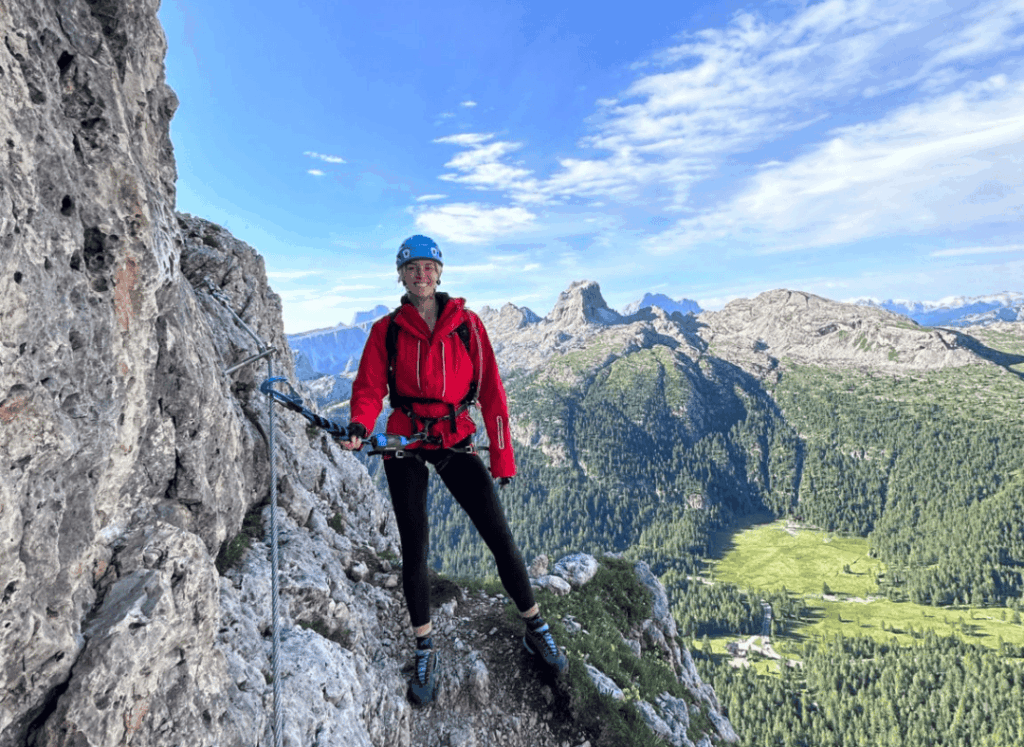
Who can complete a via ferrata depends on the route you choose, some are beginner and child friendly, some are more advanced. The main prerequisites before you attempt a climb would be:
In order to complete a via ferrata, you need specialist equipment. This can typically be rented from a nearby sports shop to the route you are taking, or you can invest in your own. A complete via ferrata kit includes:
I also recommend hiring or purchasing a good pair of climbing gloves to support your grip, and a sturdy but lightweight pair of hiking boots (or approach shoes). If you are renting gear, always check the condition and try it on before leaving the shop.
There are via ferrata routes all around the world, but the highest density are in various areas across Europe such as Austria, Switzerland, Slovenia, The Pyrenees in France and The Dolomites in Italy.
If it is your first time taking on a via ferrata then you may consider hiring a mountain guide. Personally, I would recommend this for anyone and everyone who is a beginner. It’s a high risk sport and even just doing one climb with a guide may give you peace of mind for future adventures.
That being said, if you’re a seasoned hiker, have strong mountaineering skills and have done prior research on how to use via ferrata equipment then hiring a guide may be a waste of money – especially if you have an experienced friend going with you who can teach you the basics. You can always start with a few beginner paths and then build up to more intermediate or advanced ones.
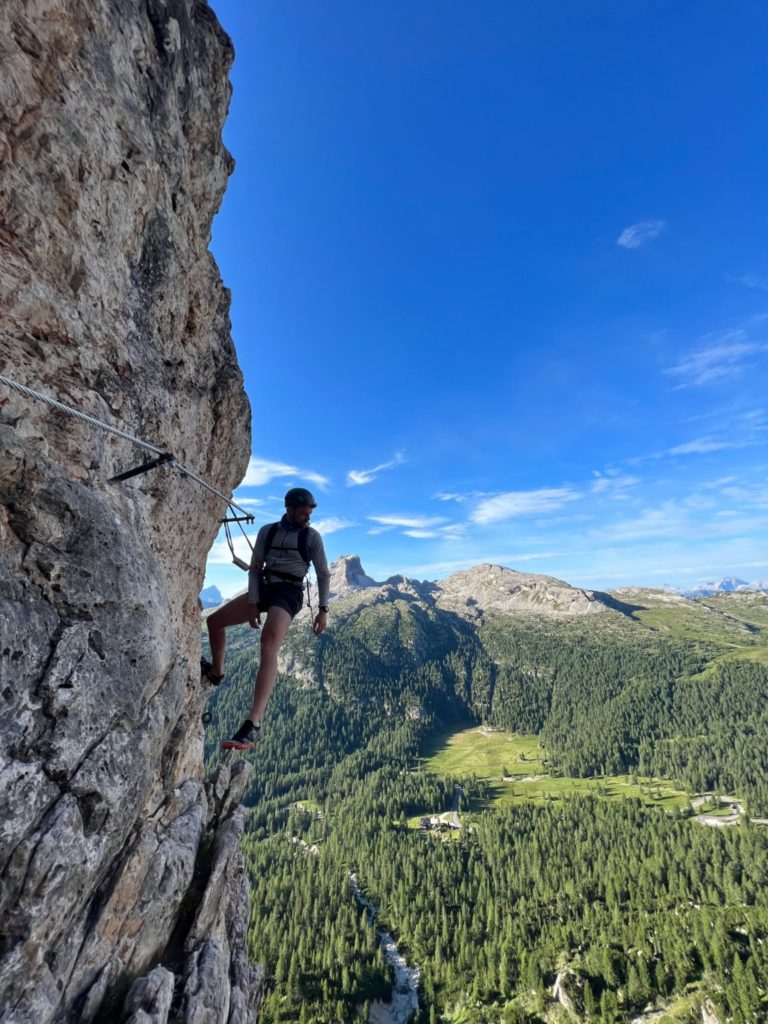
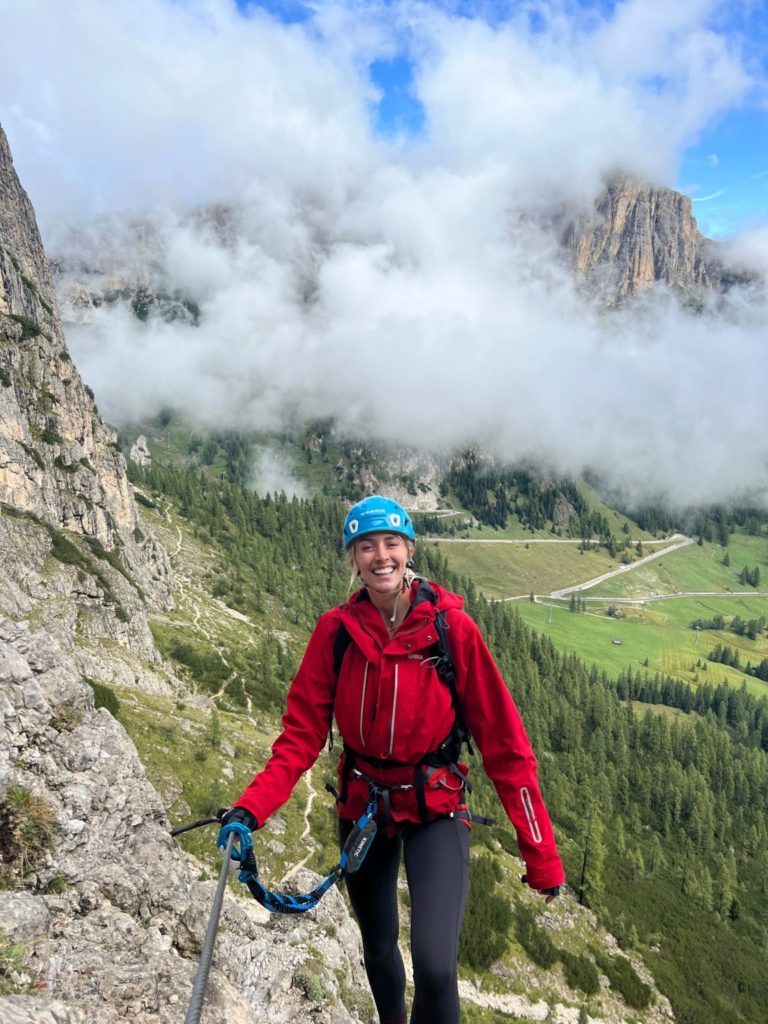
I do recommend you hire a guide or go with an experienced on your first climb, but for reference here are some via ferrata basics when it comes to technique:
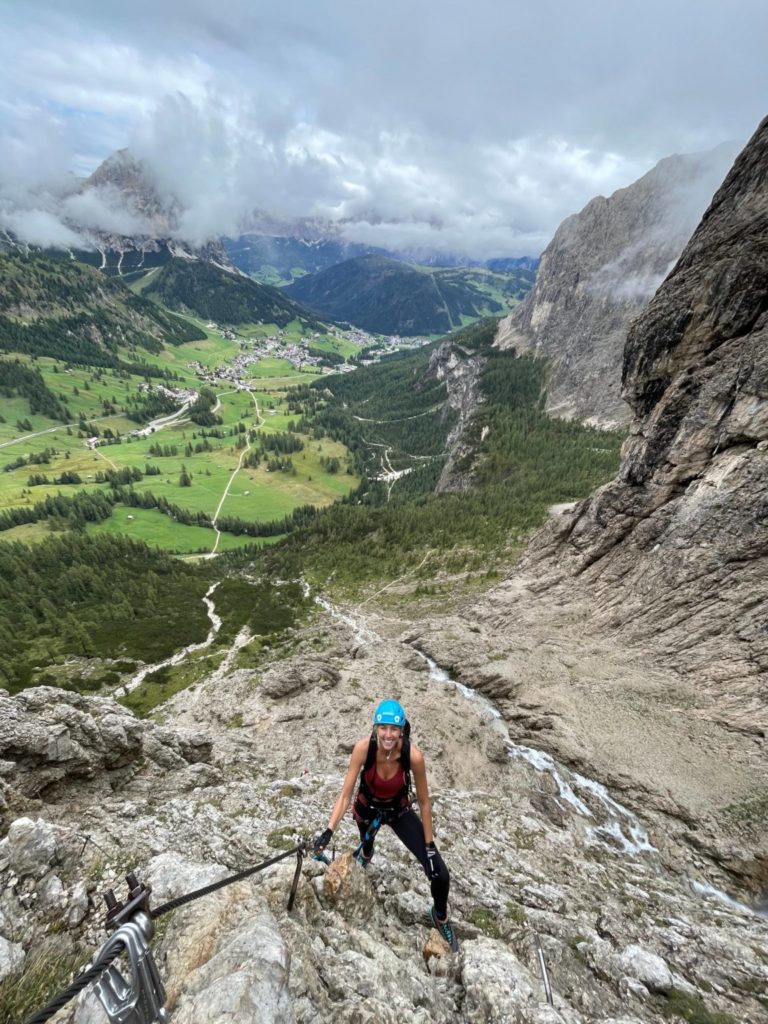
You can find via ferrata routes online through resources such as Ferrate 365 in The Dolomites, or through hard copy books such as Via Ferratas of the Italian Dolomites. There will be respective books and websites for any other European mountain regions you are exploring.
Via ferrata routes have different grading systems in each country. In the Dolomites they are graded with both numbers and letters, 1-6 and A-E. The number reflects the technicality of the climb. 1 means it is more of a hike with some simple exposed sections/scrambling. 5 or 6 are vertical or near vertical climbs with fewer hand and foot holds. The letter reflects how quickly you can get back to civilization in an emergency/how remote the climb is. An A climb would be a shorter climb, near to civilization with potentially some “escape routes” mid-climb. Whereas a C/D climb would be a longer route which is more remote with perhaps no escape routes. Make sure you choose a via ferrata that is an appropriate grade for you.
Another thing to check when picking a via ferrata route is the approach time and the descent route. Some approach times can be short and easy, which often leads to a busier climb and others can be longer and harder. The descent route can be a steep hike, a cable car or a long trail. Ensure you factor in time for the approach, climb and descent.
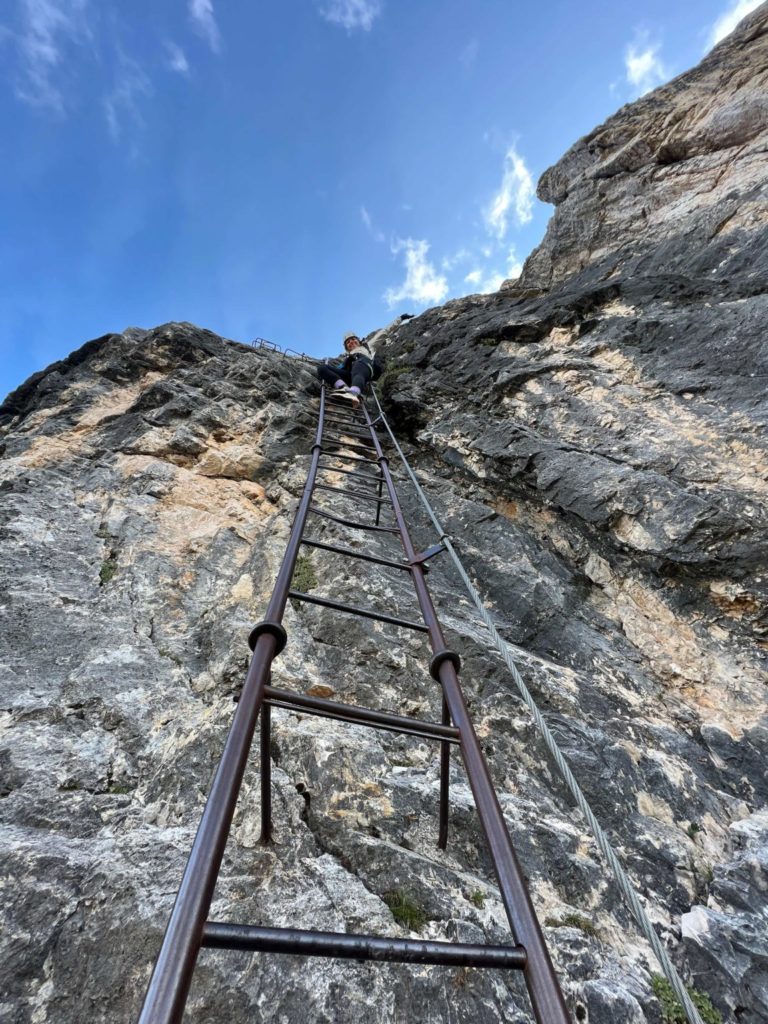
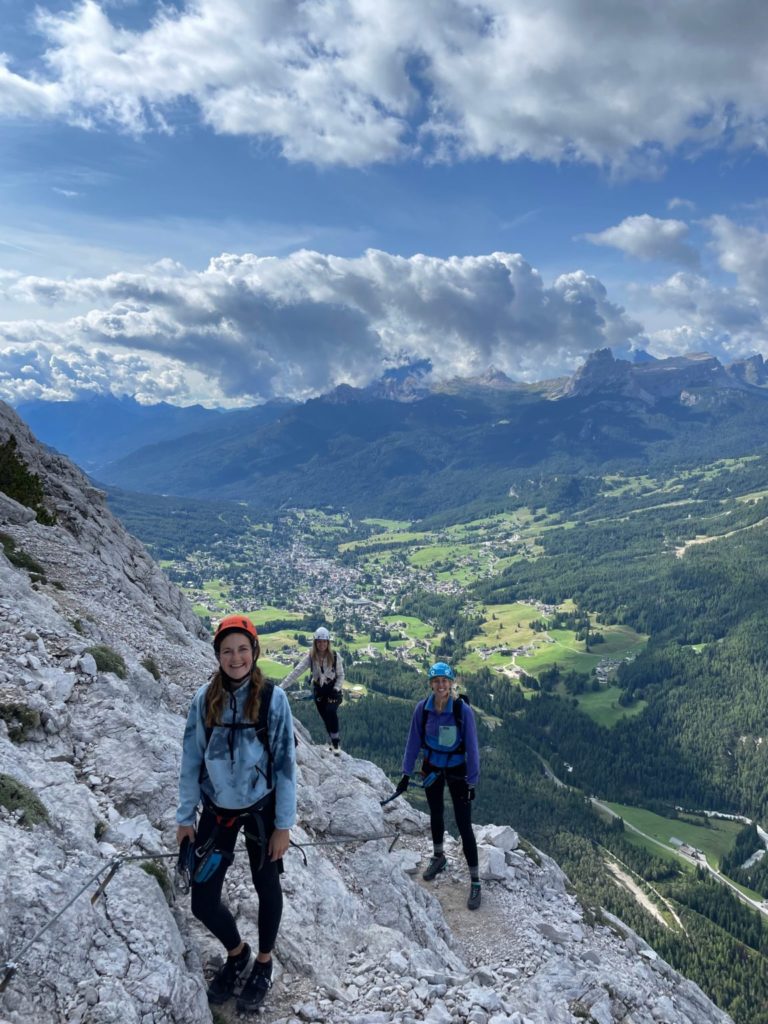
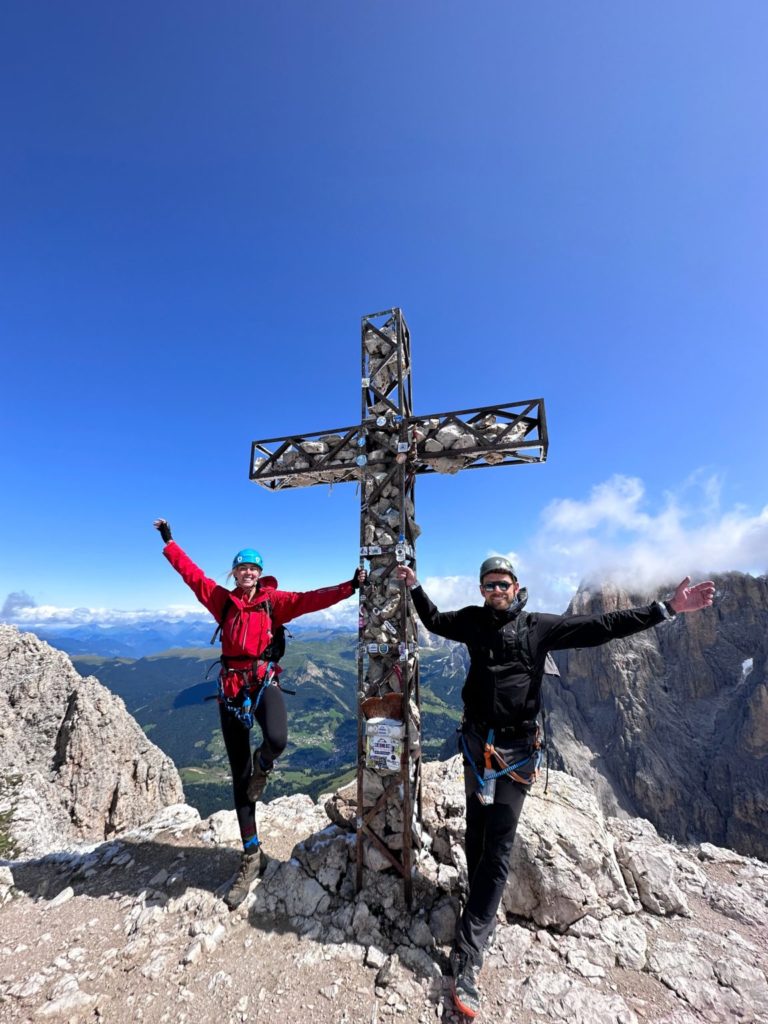
Via ferrata is an incredible, exciting and exhilarating way to connect with and explore the mountains. Once you have completed a few routes your confidence will soar, and you will be able to challenge yourself in new ways – building your physical and mental strength and resilience. I am sure you are going to love it as much as I do!
Good luck, happy climbing!
Zanna x
Let me slide into your inbox. A monthly newsletter of all the good stuff – latest posts and videos, rants and rambles, recommendations and resources.
Website Designed by Brogan Daisy Digital © Zanna Van Dijk 2025